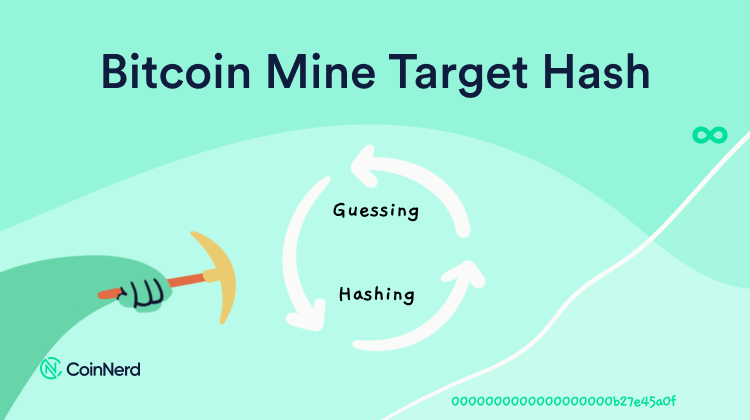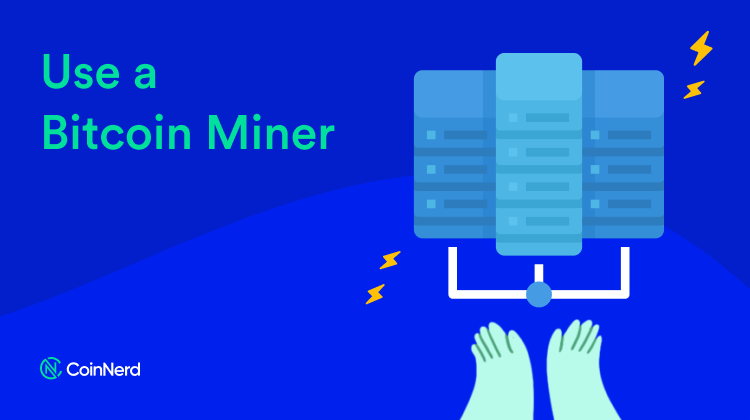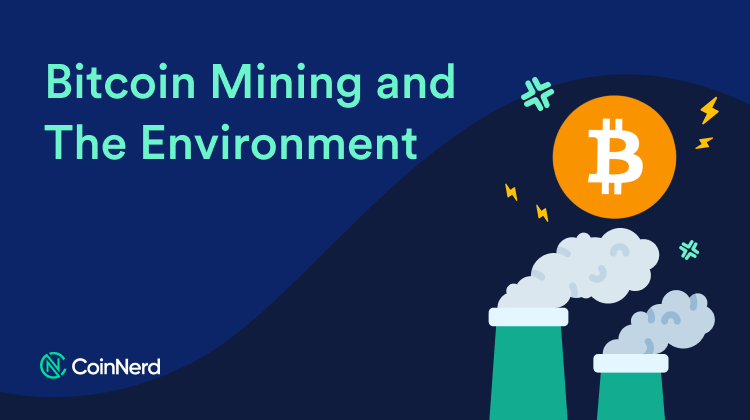How To Mine Bitcoin: A Definitive Guide
Bitcoin has taken the world by surprise as more and more countries are adopting this cryptocurrency and plans to regulate it. If you’re planning to get your hands into mining this “goldmine”, then we recommend that you read our comprehensive guide on how to mine Bitcoin.
What is Bitcoin Mining?
In the minds of the general public, crypto mining merely represents the process by which new cryptocurrencies are created. To validate cryptocurrency transactions and add them to the distributed ledger, crypto mining is also required. The most important benefit of crypto mining is that it keeps digital currency from being spent twice across a network.
It is necessary to debit one account and credit another to update the digital ledger when a member spends cryptocurrency, just like with physical currencies. The problem with digital currency is that it is easy to manipulate digital platforms. Thus, only miners who have been verified by the Bitcoin network can update the digital ledger. This gives miners an additional responsibility to prevent double-spending on the network.
Miners are rewarded for their efforts in securing the network with new coins. In decentralized ledgers, the mining process is critical for verifying transactions because there is no central authority to back them up.
Hence, miners are motivated to safeguard the network by participating in the transaction validation process that increases their chances of winning newly minted coins.
A proof-of-work (PoW) consensus protocol has been implemented to ensure that only verified crypto miners can mine and validate transactions. PoW also protects the network from outside intrusions.
Mining for cryptocurrencies is a lot like mining for precious metals. Coins will be released into circulation by crypto miners instead of traditional precious metal miners who dig up gold, silver, and diamonds from deep underground.
Using cryptographic hashes to solve complex equations, miners can be rewarded with new coins in their accounts. In computing, a hash is a digital signature of a chunk of information that is truncated. When transferring data over a public network, hashes are used to protect it from being intercepted.
The first miner to decipher a crypto coin transaction’s hash value wins the reward and adds the block to the ledger. Miners compete with one another to find the best hash value.
An unbroken chain of blocks is formed by using a hash function to reference the preceding block. Because of this, peers on the network can easily verify whether certain blocks are valid and whether the miners who validated each block correctly solved the hash to receive the reward.
The difficulty of equations on the network increases over time as more advanced machines are deployed by miners to solve PoW. The scarcity of cryptocurrency rises as a result of increased competition among miners.
Why Mine Bitcoin and how does it Work?
In addition to generating revenue for miners and maintaining the Bitcoin network, mining is essential because it is the only way new cryptocurrency can be released into circulation. To put it another way, mining is a form of currency.
Except for the genesis block (the very first block, which was created by founder Satoshi Nakamoto), all of the bitcoins in circulation today were created by the labor of individual miners. As long as Bitcoin exists and is usable as a network, it will continue to exist even if miners are absent.
It will take until around 2140 for the final Bitcoin to be “mined” due to a decrease in the rate at which the currency is “mined.” This does not imply that transactions will no longer be authenticated. To maintain the security of the Bitcoin network, miners will continue to verify transactions and be compensated for their efforts.
To mine new bitcoins, you must be the first person to find the correct answer to a numerical problem. “Proof of work” refers to this process as well (PoW). To begin mining, you must first perform this proof-of-work activity.
There isn’t much to it in terms of complex computation or mathematics. While it’s true that miners have to deal with challenging mathematical problems, this isn’t due to the difficulties inherent in the subject matter.
For the most part, they’re just competing for the honor of being the first miner to produce an equivalent 64-bit hexadecimal number to the target number. It’s all a matter of speculating.
A random guess is all that matters, but with trillions of possible guesses for each one of these problems, it’s a lot of work. In addition, the number of possible solutions (referred to as mining difficulty) grows as more miners join the network.
Miners need a lot of computing power to get started on a problem. A high “hash rate,” measured in terms of gigahashes per second (GH/s) or terahashes per second (TH/s), is required for successful mining.
Being a bitcoin miner not only pays off immediately in the form of new bitcoins, but it also gives you sway over the Bitcoin network protocol as a whole. As a result, this is referred to as a Bitcoin Improvement Protocol (BIP).
When it comes to issues like forking, miners can exert some degree of control over the process. If you have a lot of hash power, the more influence you have on the outcome of these initiatives.
How The Mining Process Works
Below is a simplified list of how crypto mining works in general. It might be simple on the outside but your Bitcoin miner is essentially generating a hash value in less than a second and trying out all possible combinations until the hash they generated gets approved. When it gets approved, the Bitcoin miner is rewarded with Bitcoins.
Step 1: A new hash is generated from a block
A new hash and header data from the previous block in the chain are added to the new block once enough transactions have been added to it. A block header and a nonce are combined to generate a new hash. When a miner node adds this hash to the unconfirmed block, it must be verified by another miner node.
Step 2: Miners verify this new hash
A cryptographic algorithm called SHA-256 is used to calculate hashes and to measure the hash rate (EH/s) of Bitcoins. There are one quintillion hashes in a single exahash. There are presently terahashes per second (TH/s) units of Ethereum measurement. There are 1 trillion hashes in a terahash.
To put it simply, a hash is a long set of numbers and letters like this:
“0787b4250f9a5e1b331aa75d1340ca9103f4e01bb2527e0c9ff9fe62f8ee8e9a
a15c3b866892605b5c1d1319ad016c4b4533190fab605b7d57c16480d6426d5b
20e6e65877c7aff5726ee46f14be0c994bdf57f613e6bb5b3679b48eda08c926
14e8770b6ec15acc1f5a5c47d47925f82bff2992ca6c968a23af042b204febd3
9f6d193c09dafb50b09f8002389c95423982ac7de6eebac4977c9de48ae0787b
”
This hash might seem long to you but believe us when we tell you that this is one of the shorter ones out there. This is where you’ll be needing a powerful computer or mining rig specifically designed for Bitcoin mining.
Step 3: The Miner Receives Rewards if the Hash meets the requirements
The difficulty of the input is determined by the target hash, which can be adjusted to ensure that blocks are processed quickly. In cryptocurrencies with a proof-of-work system, for example, target hashes are employed to determine the current mining difficulty (including Bitcoin).
In a blockchain, a block header is a unique identifier for each block. A block header hash must fall below or equal to the target hash before a miner can receive the reward of a new block.

Step 4: Proof of Work is Completed and A new Block is Published
Proof of work is a time-consuming process in verifying a hash and creating a new blockchain. The lucky miner who solves is rewarded and a new blockchain can now be used by the Bitcoin community. The new block is added to the end of the existing blockchain and everyone benefits from this process.
How to Mine Bitcoin?
First and foremost, if you’re wondering how to mine Bitcoin, you should know that the only way to do so is to purchase an ASIC, an Application-Specific Integrated Circuit device. A device created solely for mining cryptocurrencies like Bitcoin.
Only Bitcoin can be mined on these machines, but they are extremely efficient in the process. When they were introduced in 2013, all other types of mining calculators were rendered useless almost immediately.
You’ll need to look into other coins if you want to mine with CPUs, GPUs, or FPGAs. It’s a waste of time and electricity to use these devices to mine Bitcoin, even though they are capable of doing so.
The AMD 7970 produced 800 million hashes per second as a point of comparison just before the advent of ASICs. This is a 125,000-fold increase in the average ASIC’s hash rate.
“Hash rate” refers to the number of hashes generated per second, which is an important metric for mining devices.
A Bitcoin mining device should also be considered in terms of two other factors. The first is the amount of electricity used, which is expressed in watts. The device that consumes the least amount of electricity will be more profitable than the one that generates the most hashes.
The cost per unit for each device is the third metric. To have the most efficient ASIC in the world is useless if it takes 10 years to pay itself back through mining.
ASIC manufacturers in the Bitcoin ecosystem can vary widely in terms of these three factors. ASICs that are more efficient but also more expensive are made by some, while those that are less efficient but less expensive are made by others.
Before deciding on the best device for your needs, it’s critical to understand the other factors that affect Bitcoin mining profits.
In addition to manufacturers’ direct sales, several shops sell ASICs to consumers at retail prices. ASICs are more difficult to come by than standard graphics cards, but they are still accessible to the general public at a reasonable cost.
It’s important to keep in mind that purchasing mining equipment from a shop or manufacturer in another country may result in hefty import fees.
Manufacturers and retailers can differ on whether or not ASICs come with a power supply unit (PSU) that must be bought separately. Some ASIC manufacturers sell their own PSUs, but it is also possible to use PSUs built for servers or gaming computers, though they may require additional modifications.
To configure ASICs, a web browser must be used to connect to the local IP address, which is similar to a home router’s IP address. A mining pool’s website will provide specific instructions on how to connect to its servers once you’ve created an account with them.
The pool’s connection endpoints and account information must be entered into the ASIC’s web panel. After that, the miner will begin producing Bitcoin.
An established mining pool is strongly recommended, as you can generate steady returns by sharing your hardware with other miners in the network. Your mining contribution will still be rewarded even if your device fails to find the correct hash to create a block.

Things To Consider When Mining Bitcoin
As a business, bitcoin mining is a profitable endeavor. Its output, bitcoin, is dependent on the amount of money invested in its inputs.
Bitcoin mining has three main costs:
Network
It’s critical, however, to have a reliable Internet connection that’s always on. Nearby mining pools’ latency should be factored into the connection. Dedicated networks minimize latency by reducing reliance on external networks.
Transactions can be synchronized even if the network is unavailable. However, once a connection has been reestablished, the process may become more time-consuming and prone to errors.
Mining systems
As a result, a home network may experience congestion or overheating as a result of this process. Bitcoin miners’ primary infrastructure investment is in ASIC systems. These machines can cost anywhere from $4,000 to $12,000, depending on the features they include.
It’s still not enough to make a single bitcoin with a single ASIC-equipped system, even at these exorbitant prices. There are thousands of ASIC machines in mining pools that work around the clock to generate the 64-digit hexadecimal number that solves a hash puzzle.
Power
Crypto mining can cost a lot of money. Electricity may account for as much as 90% of the total cost of bitcoin mining, according to some estimates. Since the process uses as much electricity as some countries, the costs can quickly add up.
For miners to make a profit, the total costs of these three inputs must be less than the output—in this case, the price of bitcoin. The idea of minting your cryptocurrency may sound appealing in light of bitcoin’s skyrocketing price.
However, despite what proponents of Bitcoin claim, cryptocurrency mining is not a pastime in any way. It’s a risky investment with a high failure rate. No matter how much time and money is invested in mining, there is no guarantee that you will receive any bitcoin rewards. It may be possible to run a small business mining bitcoins by aggregating mining systems.
The cryptocurrency’s fluctuating prices, on the other hand, but even these businesses are at risk. If the price of the cryptocurrency falls as it did in 2018, then bitcoin mining systems will be unprofitable to run, and small miners will be forced to close their doors. 5 With the number of bitcoins awarded to miners decreasing every four years, the activity becomes increasingly unappealing.
The Effects of Bitcoin Mining on the Environment
According to Columbia Climate School, Bitcoin Mining has a huge impact on the environment thanks to its large consumption of energy and the emission of greenhouse gasses. The process of finding the right nonce to generate the target hash is akin to a hacker trying random passwords to hack yours and can take trillions of tries.
Bitcoin is estimated to use 707 kWh per transaction due to the large number of computers involved in making educated guesses. Additional power is required to keep computers cool due to the heat they generate.
Because different computers and cooling systems have varying levels of energy efficiency, it’s impossible to know exactly how much electricity Bitcoin uses.
To make matters worse, miners have to constantly upgrade their computers to keep up with the competition. As a result, miners must process more transactions or use less electricity to make mining financially worthwhile over time.
Therefore, miners must look for the cheapest electricity and upgrade to more power-hungry machines.

Bitcoin miners exploited China’s cheap hydropower and coal-fired power plants for processing power in 2020, with China accounting for more than two-thirds of the global processing power. A recent crackdown on mining in China was motivated by concerns about cryptocurrency’s financial risks and enormous energy consumption, which is contrary to China’s goal of being carbon neutral by 2060.
As a result, many Chinese bitcoin miners are looking to relocate their operations to other countries, such as Kazakhstan, which is heavily reliant on fossil fuels for electricity, and the United States. Several states in the United States are eager to attract Chinese miners to boost their economic growth.
They are selling their mining gear instead since they can’t get out of where they are. Bitcoin miners in the United States are raising hundreds of millions of dollars to invest in bitcoin mining and converting abandoned factories and power plants into large Bitcoin mining facilities.
There are dire consequences for climate change and meeting the Paris Accord goals due to Bitcoin’s global power consumption, which is estimated to be 22 to 22.9 million metric tons of annual CO2 emissions, or the annual CO2 emissions of 2.6 to 2.7 billion homes worldwide.
According to one study, Bitcoin could cause global warming to rise above a 2 degree Celsius threshold. Bitcoin mining in China alone, according to another estimate, could produce 130 million metric tons of CO2 by 2024. As more mining moves to the United States and other countries, this amount could increase even more unless more renewable energy is used.
But things might change in the future since some of the newer Bitcoin miners are more efficient and will less likely consume more power. The Antminer S19 Pro+ Hyd will be launched on January 17, 2022, by Bitmain.
When it comes to power consumption, it uses 5445W and its power efficiency is 27.5 J/TH. The S19 Pro+ Hyd. uses the most advanced liquid cooling technology available today.
Is Mining Bitcoin Legal?
Since its inception in 2009, Bitcoin and the subsequent cryptocurrencies that followed have been controversial. Amidst widespread skepticism about Bitcoin’s volatility and use in nefarious transactions, some people, particularly in the developing world, are beginning to see it as a haven during economic storms.
These issues, however, have manifested themselves in a wide range of restrictions on the use of cryptos as an investment or a lifeline. And if you’re wondering if it’s legal to mine Bitcoin, then let’s just say that mining Bitcoin is legal in most countries but it all depends on where you live.
Bitcoin’s legal status varies greatly from country to country, while in some, the relationship is still undefined or constantly evolving. But here is a list of countries that have big issues with cryptocurrencies and Bitcoins.
- Bolivia
- Algeria
- China
- Colombia
- Indonesia
- Egypt
- Iran
- Iraq
- India
- Kosovo
- North Macedonia
- Nepal
- Vietnam (Does not ban trading or holding of Bitcoin but it is illegal to use as payment)
- Turkey
Conclusion
To conclude, Bitcoin mining is a process that requires you to invest in an ASIC. The process of mining this cryptocurrency requires a lot of processing power and specially made devices like ASIC are highly recommended. Aside from this, there are some issues when mining Bitcoin, especially power consumption.
If you can’t provide enough power or aren’t fully invested in mining, then we don’t recommend that you do so since the process is costly both in time and in resources. Only do it if you’re sure that you can commit. We hope that our article was helpful and that helped you understand everything you need to know on how to mine Bitcoin.
* We hope this information will help you in your investment process, but this is not investment advice. Every investment carries risk, especially in this industry, so DYOR before making a decision.






